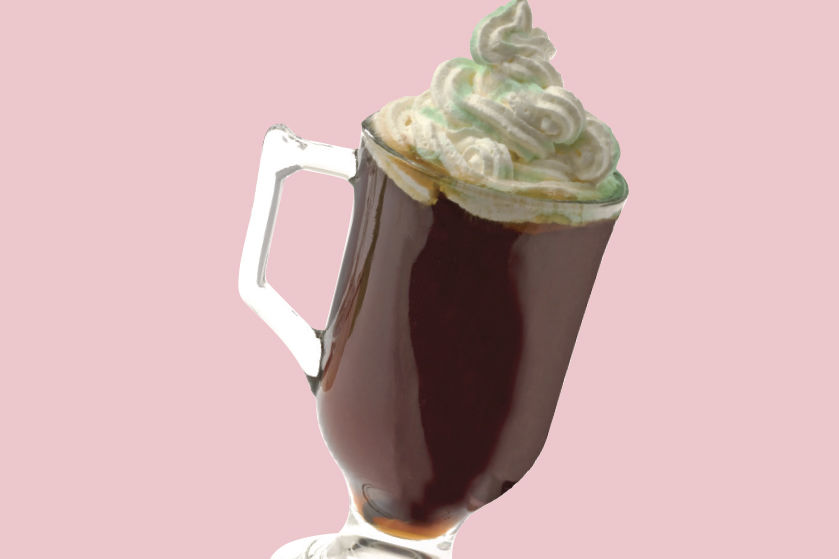Why Are Houstonians Honoring Someone Who Fought for Slavery?

Green beer: a tradition we can get behind.
Image: Shutterstock
This month, as St. Patrick’s Day approaches, Houston’s Irish community will take part in a flurry of activities: a downtown parade, a stew cook-off, and the consumption of green beer. To go along with the festivities, some will attend an annual meet-up at the Dick Dowling statue in Hermann Park, where they’ll commemorate the famed Houstonian.
Richard “Dick” Dowling was an Irish immigrant and prominent Bayou City businessman who helped found the Houston Fire Department and start the city’s first streetcar company. In 1863, he led the Confederates to victory at the historic Battle of Sabine Pass, cementing his stature as a local celebrity.
In the decades that followed, the city named schools and streets after Dowling and, in 1905, honored him with a marble statue originally mounted at City Hall, which depicts the Irishman as a mustachioed soldier in Confederate uniform, staring into the distance with a steely gaze, binoculars in hand.
At this month’s gathering, historians, the local Texas Army reenactment group, and certain members of the Houston St. Patrick’s Day Commission will salute Dowling with speeches and a cleaning of the statue. It’s a ritual that, in one form or another, has been performed for years. But in 2016, when even South Carolina has removed the Confederate flag from its capitol building, why are Houstonians honoring someone who fought for slavery?
“Even though he is remembered for his Confederate service, we feel it’s more about his Irish heritage,” says Jeannie Kearns, treasurer for the commission, which, she stresses, didn’t put together the loosely organized event. “He did a lot of great things at a time when it was really hard for an Irishman, or even an immigrant, to do so.”
Not everyone agrees on Dowling’s legacy. “I think it’s fair to say that he probably would not have a statue in Houston were it not for his role in the war,” says Caleb McDaniel, associate professor of 19th-century history at Rice University. “When the statue was put up, it wasn’t a decision from every Houstonian at the time, and there were certainly Houstonians, especially black Houstonians, who had no say in that decision or really public place in which to voice their opposition.”
The statue was completed at a time when the South was busy commemorating its Confederate heroes, particularly men who’d survived the war but were dying off. Jim Crow laws were, of course, in full effect, and Confederate reunions—like the one that took place in the Bayou City in 1895—as well as statue, school and street dedications were the order of the day. The city moved the Dowling statue to Hermann Park in 1958.
In a town not known for caring about its history, relics from our Confederate past traditionally have attracted little notice. But there have been a few lone voices of protest, among them Rep. Garnet Coleman of District 147, who’s been trying to get the name of Dowling Street changed since the 1990s. The Third Ward street got its name in 1892, when Broadway was rechristened as Dowling, which intersects with Tuam—named for Dowling’s Irish birthplace—right at, of all places, Emancipation Park.
“What I am concerned about is that when the government names schools, streets, or whatever after Confederate leaders,” Coleman says, “it is the government saying that these people ought to be honored for fighting for slavery and oppression of people of color.”
For years, the state rep’s words have gone unheeded, but a funny thing is happening in Houston lately. The city seems to be waking up from its amnesia. This January, the HISD board voted to change the names of four area schools: Robert E. Lee High School, as well as the middle schools named for Henry Grady, Thomas “Stonewall” Jackson and—you guessed it—Dowling. Hiram Clarke’s Richard Dowling Middle School, by the way, has a 99 percent minority enrollment rate.
Coleman would like to see this trend taken further. Houston, he thinks, should follow the example of New Orleans, whose City Council voted to take down four Confederate statues, including one of Robert E. Lee, this December. “These memorials and commemorations of Confederate leaders are trying to put a positive light on a very dark part of our history,” he says. “I would like to see them taken down. There is a place to tell the whole story, and that is in our schools and museums.”




